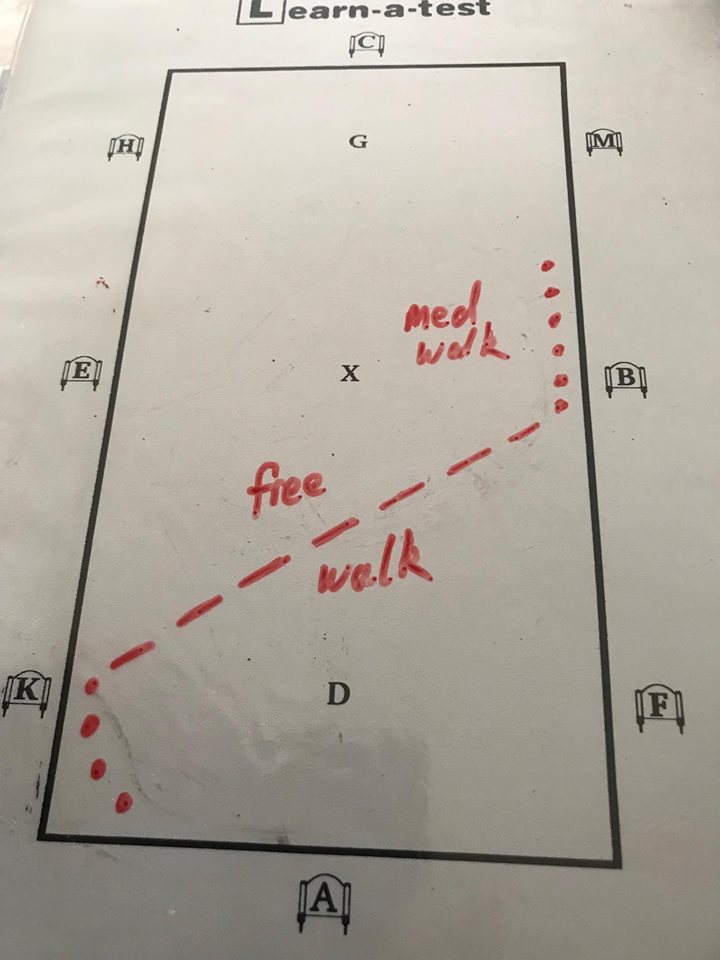

Transition from ˜Free walk" to Medium walk.
If you're riding a TB that's fit and ready to kick off then this is a HARD movement!
I like to see a noticeable shortening in the frame of the horse (usually within 2-4 walk strides) whilst passing the correct marker with the head becoming vertical (or just in front) and the neck raising and round. The contact should be elastic and light but stable. The rhythm of the walk should be constant and although the strides shorten they should be at least tracking up, with the hocks engaging and carrying more weight than in the free walk.
I do not want to see…
- Hollowing
- Resistance
- A change in rhythm / regularity
- Breaking (jogging)
- Tension in back / anticipating
Tips…
1. In your schooling, practice a free walk to medium walk, then halt. Also Free walk to medium walk then back to free walk. Vary it with free walk to medium walk to leg yield so he doesn’t know what’s coming next and reduce the risk of tightening and anticipating.
2. Don’t practice the movement ‘over and over’ again as this increases the risk of anticipating. Also, do not practice walk to canter too often either for the same reason.
3. The gathering of the reins can either be done by creeping up the reins with both hands, or by holding both reins in one hand momentarily and shortening one rein the swap and shorten the other. Practice both, and be able to do both in the test and choose the method that best suits him at the time, taking into consideration a number of different factors (tension, energy levels, windy conditions etc).
4. If you know that your horse is tense and likely to jog then don’t go ‘all out’ for a good free walk as when gathering up he’ll be 100% likely to jog. Instead, keep a little more connection and only lengthen the frame a few inches (but make the lengthening noticeable) and then it will be easier to gather up without jogging.
5. Half halt and test the connection a few steps before you intend to make the transition to medium walk.
6. Do not train him to soften and relax by using your voice as we do take 2 marks off for use of voice, regularly.
7. Breathe, keep your centre of gravity low by ensuring your arms, shoulders and core remains relaxed.
8. Look at the ears and try keep them in the middle, as if they come back then that’s a sure sign of impending if not already present tension.
None of this is out of a book and I’m sure there’s things I’ve missed, but hopefully it gives you an idea of what we’re looking for and how to do it.













